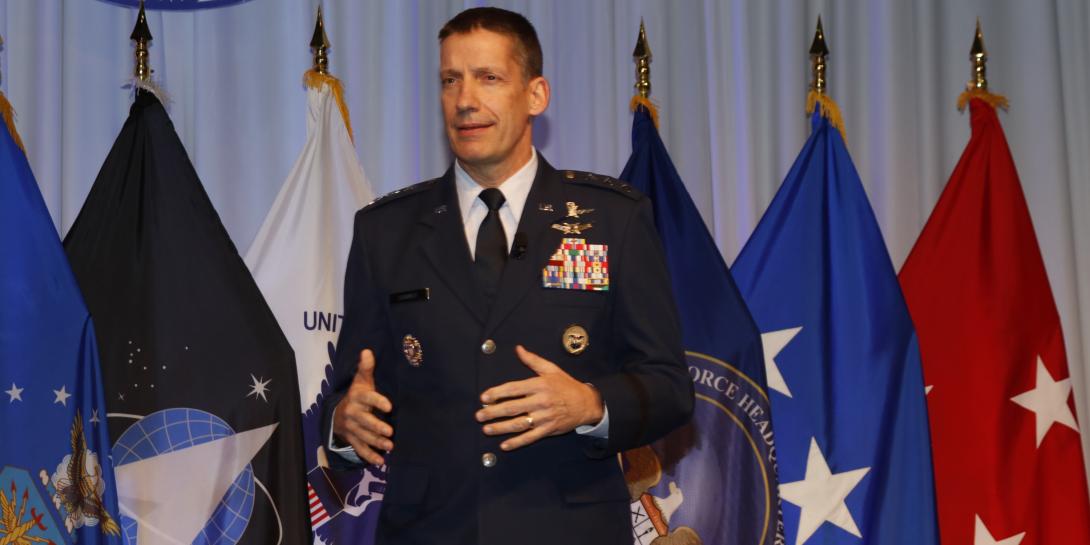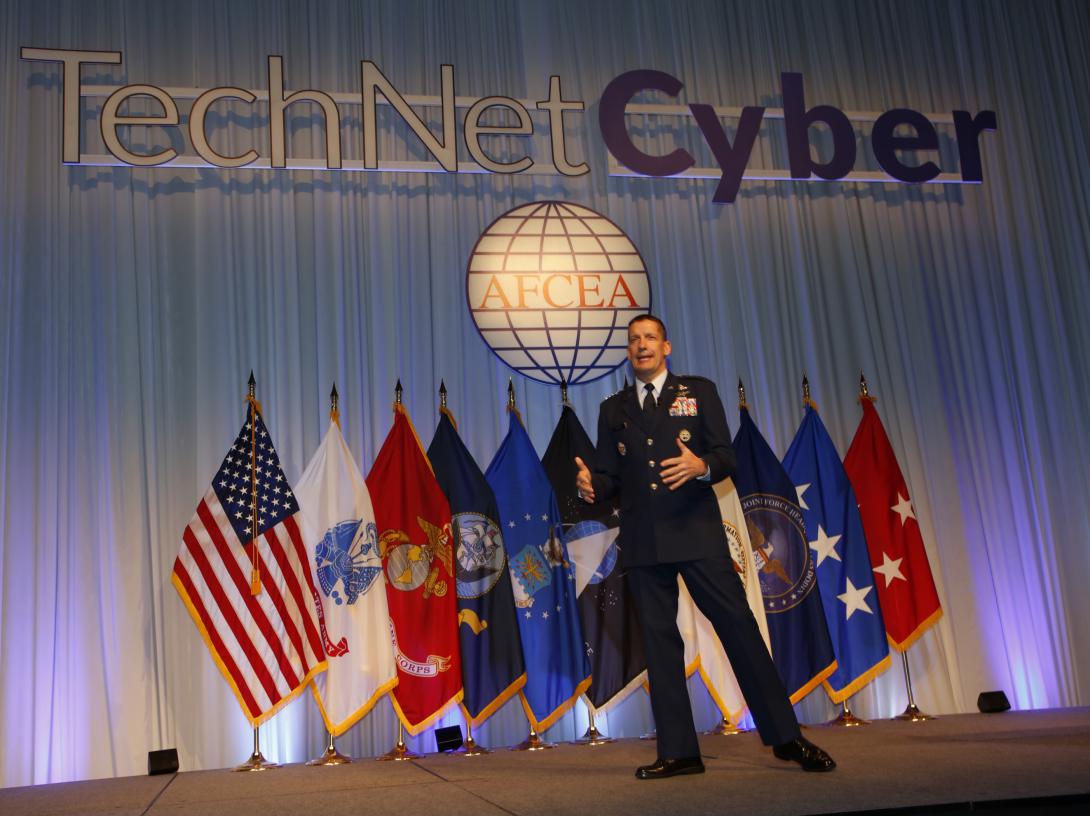Driving Force Readiness Through Innovation
Faced with supporting complex warfighting in a future near-peer environment, the Defense Information Systems Agency, or DISA, a combat support agency that provides key communications, computing and information technology on a global scale, has reorganized to better position the whole of the Defense Department for the future fight.
“The problem statement that we really looked at hard and continue to look at is: ‘Is DISA’s organizational design too complex for best value?'” explained Lt. Gen. Robert Skinner, USAF, director, DISA, and commander, Joint Force Headquarters-Department of Defense Information Network (JFHQ-DODIN). “Is that true? And if that is true, then what do we need to do to improve?”
Gen. Skinner presented the opening keynote address at AFCEA International’s TechNet Cyber conference in Baltimore on October 27.
Since Gen. Skinner took over as DISA and JFHQ-DODIN’s leader in February, the agency has revamped its organizational design, moving from two to four centers. The new organizations are referred to as: Digital Capabilities and Security; the Hosting and Compute Center; Operations and Infrastructure; and Enterprise Integration and Innovation. Another part of the agency’s “significant change” has been the retirement of half a dozen of its most senior leaders.
“Over the last 5-6 months, Chris Barnhurst, the deputy director at DISA, led a team that looked from a mission analysis standpoint at what we needed to focus on and what we needed to change,” Gen. Skinner shared. “Working with that mission analysis group we came up with an organizational structure to reduce complexity and enable greater interaction and collaboration with industry.”
The Digital Capabilities and Security Center, led by Jason Martin, will specialize in driving security and enterprise capabilities and component acquisition. It also includes the Joint Interoperability Test Command as well as DISA’s Defense Spectrum Operations group. Meanwhile, the Hosting and Compute Center, or HACC, will be led by acting director Sharon Woods and will focus on providing hosting and computing capabilities, including cloud solutions. The Operations and Infrastructure Center will continue to provide operations and infrastructure such as DoDNet and transport capabilities.
Lastly, the Enterprise Integration and Innovation organization—led by Roger Greenwell who is also the chief information officer and acting risk management executive—will center on how to leverage innovation and integrate technologies into the enterprise. “We realized we really didn't have an organization focused on innovation,” Gen. Skinner noted. “We didn't have a chief data officer or even someone focused on data."
Last 4-5 months @USDISA has been restructuring. We didn’t even have a chief data officer before. Now our Enterprise Integration & Innovation organization, headed by Roger Greenwall, will tackle innovation, explains Director Lt Gen Robert J. Skinner #AFCEACyber @AFCEA pic.twitter.com/rvgu1n0BMk
— Kimberly Underwood (@Kunderwood_SGNL) October 27, 2021
The Enterprise Integration and Innovation center also will examine how to advance risk management framework (RMF) solutions. “We are working on how in an innovation organization, how do we innovate RMF to help support the department in driving and moving forward,” the general explained.
The ability to provide command and control, or C2, to the nation’s top leaders also remains one of DISA’s priorities, according to Gen. Skinner. C2 is at the heart of joint all-domain command and control, or JADC2, as well as JFHQ-DODIN.
“The number one area in my eyes continues to be command and control,” he emphasized. “As a combat support agency, we cannot fail in the ability to deliver command and control to our senior leaders. The president of the United States has to have a gold standard for command and control. The Secretary of Defense has to have the gold standard for the ability to command and control, and our combatant commanders and our fielded forces.”
Over the last year, the agency has worked to develop a robust zero-trust architecture (ZTA), under an effort called Thunderdome, led by Steven Wallace, leader of the Emerging Technology Directorate, who also is championing robotic process automation, artificial intelligence and other advanced solutions. As part of ZTA concepts, DISA is examining identity, credential and access management.
“The CAC [common access card] has been an amazing identity piece of the puzzle from a security standpoint,” Gen. Skinner said. “Some people here may have heard me say, ‘Kill the CAC.’ It is 10-15 years old. There is technology out there today that is far better than the CAC to be the primary authentication mechanism for the department, and that is what we're looking for. We will not be successful in the future if we don't have the right identity management.”
Lastly, the commander called on the industry to partner with the agency in leveraging emerging technologies, including data-focused solutions.
“I'm really looking at industry to help us innovate, help us drive that force readiness into the future,” Gen. Skinner stated. “All we have to do is look at the fiscal pressures of today and that are coming, and realize that we are not going to be successful without innovation, and I need your help.”
He asked industry to be transparent in their capabilities and costing information, and to present the agency with best value, not only for the agency, but for the department.






Comments